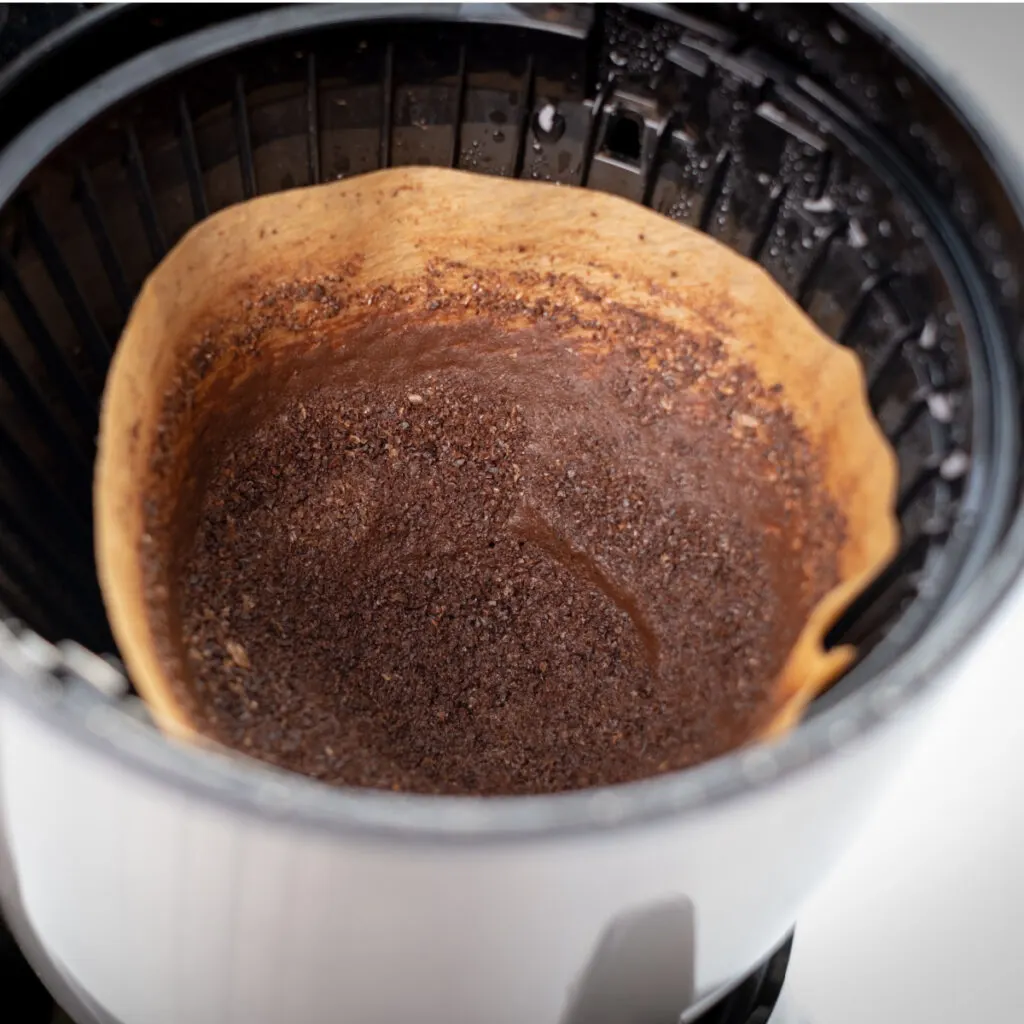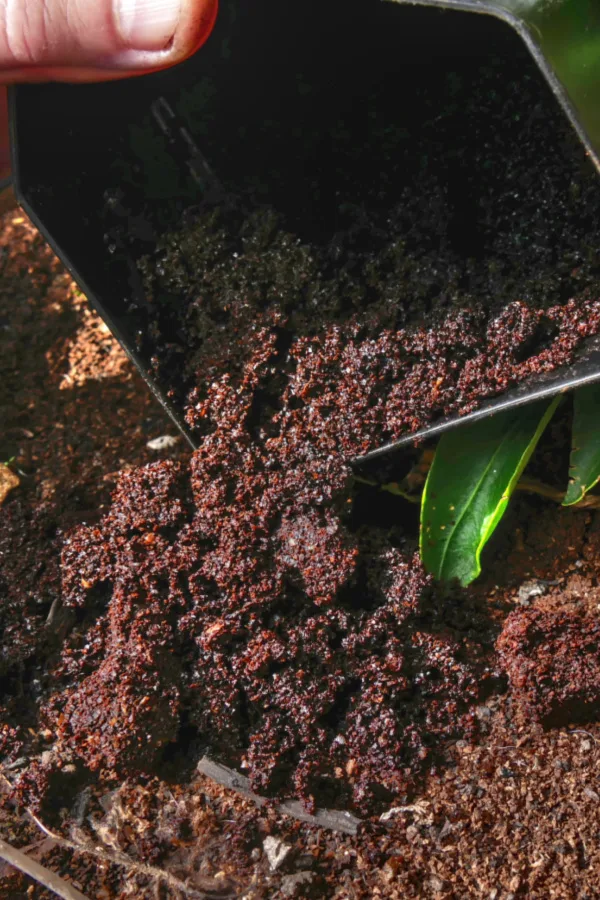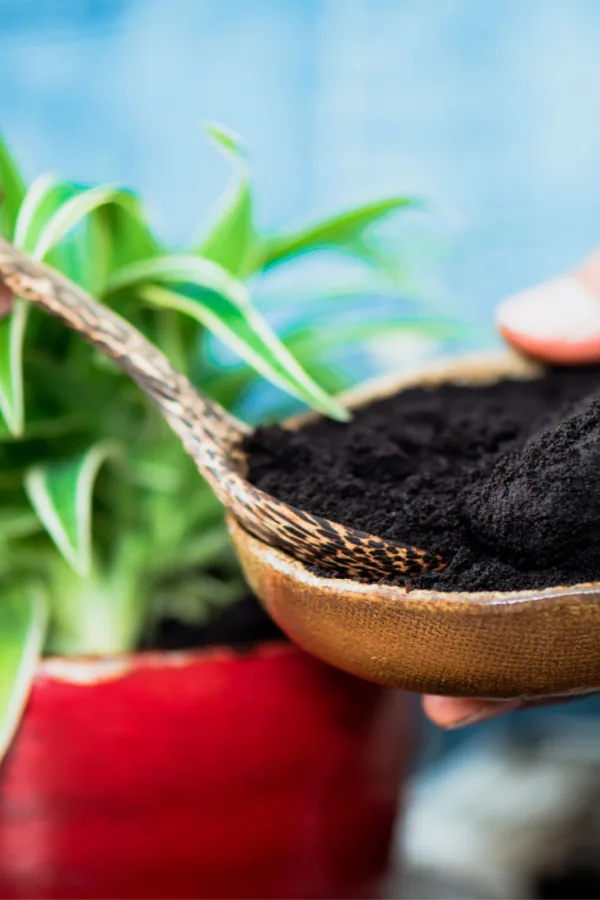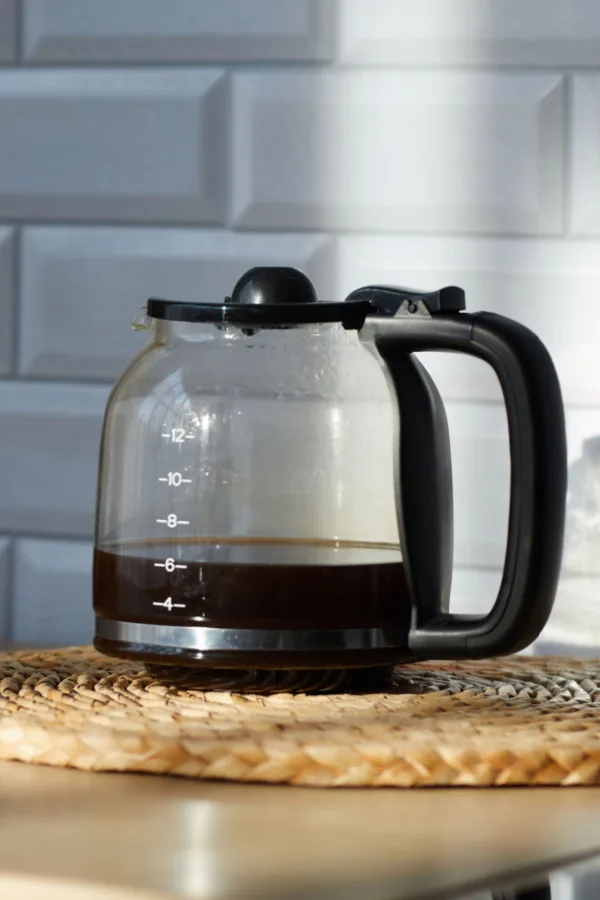Although most gardeners have heard about the amazing benefits of using spent coffee grounds to power annual flowers and vegetable plants outdoors – did you know that you can also coffee grounds to help fertilize and energize your houseplants too?
Spent coffee grounds are teeming with all kinds of helpful trace nutrients. So is the leftover coffee that remains in your pot after your morning cup of Joe. And as it turns out, both can do wonders to help perk up many of the houseplants you have growing indoors – and all for free!
Both spent coffee grounds and brewed coffee contain a long list of nutrients, including phosphorous, magnesium, potassium, calcium, zinc, and copper. But they but also contain a fair amount nitrogen. And nitrogen just happens to be one of the biggest nutrients that plants need for strong growth.

Nitrogen is vital for several critical needs when it comes to plant growth. For starters, it helps to provide the energy plants need to produce new stems and foliage. But nitrogen is also important for powering the process of photosynthesis, helping convert light into valuable energy for plants.
Using Coffee To Power Houseplants
With all of that goodness, it’s easy to see how coffee grounds can help plants grow – especially when you use them in just the right way. But when it comes to successfully powering houseplants, you need to know when and where to use coffee grounds and leftover coffee – and how much to use!
With that in mind, let’s take a look at how to use both on houseplants, and dispel a common myth about the acidity of spent coffee grounds – one that unfortunately leads to a lot of confusion about how safe they are to use on plants.
How To Fertilize Houseplants With Coffee Grounds
Coffee Grounds & Acidity
Let’s start with the myth that spent coffee grounds (and leftover coffee) are highly acidic. And – that if you use them around plants it will turn the soil acidic. This is simply not true!

Although fresh coffee grounds are more acidic, used coffee grounds are not. In fact, once hot water has run through the grounds, nearly all of the acidity is gone. Enough that used coffee grounds and leftover coffee usually have a pH of around 6.7 to 6.8 – with seven being neutral.
One thing is for sure, unless used in massive quantities (which it shouldn’t be), it will not turn the soil highly acidic.
With that said, when it comes to using grounds or old coffee on houseplants, moderation is the key. Not because of the acidity, but because it contains a good source of nutrients. And just as with any living plant, giving it too much power at once will actually harm the plant more than help it.
Coffee Grounds & Moisture – How To Fertilize Houseplants With Coffee Grounds
In addition to being filled with nutrients, coffee grounds also happen to retain a tremendous amount of moisture. Although that might sound like a positive, it can actually be very detrimental to house plants. Coffee grounds are so good at retaining moisture that when placed directly on the soil surface, they over-saturate a plant’s root system.

When this occurs, the roots of the plant swell excessively and become unable to take in nutrients. The end result is a houseplant that turns yellow from a lack of nourishment, and a root system that slowly rots and dies.
So exactly how can you use coffee grounds and leftover coffee to help plants and not harm them? By turning them into a weak tea that will power them low and slow. One that will have your houseplants growing like crazy!
Making A Fertilizer Tea With Coffee – How To Fertilize Houseplants With Coffee Grounds
There are a couple of ways to make fertilizing tea. You can actually make it with leftover coffee – or leftover coffee grounds. But when using leftover coffee, you will need to dilute it first.
Why can’t you water your plants with regular coffee straight from the pot? Unfortunately, fresh brewed coffee is too strong in the nutrient category. And for nearly all houseplants, using it at full strength will overpower them.
Although coffee at full strength is too rich, diluting it using a ratio of about 4 parts water to every 1 part of full strength coffee will work wonders for powering houseplants.

If you want to turn your old grounds into a tea, all you need to do is use the leftover grounds to make a “new” batch of very weak coffee. To make, simply keep the grounds from your first batch in place, and re-make an entire pot.
This time, the resulting liquid will be far weaker – and perfect for using on houseplants. Of course, you need to let it cool before using, but the weak tea-like solution will supply a gentle source of nutrients to your plants.
For how often to use either, as a general rule of thumb, you can use weak coffee tea to “water” houseplants every 7 to 10 days. Any more and you will risk over-fertilizing indoor plants with too many nutrients.
Using The Right Coffee – How To Fertilize Houseplants With Coffee Grounds
It’s important to note that not all coffee grounds are the same when it comes to fertilizing. Flavored coffees and coffees with artificial ingredients are not good to use on houseplants. Unfortunately, these brews can contain harsh chemicals that can harm plants.
And what about decaffeinated coffee? Both versions of coffee (caffeinated and decaffeinated) actually have the same nutrients. Unfortunately, quite often, chemicals are used in the decaffeinating process. And in some cases those chemical traces can harm plants.
Without knowing what might be or what might not be in it, it’s best to steer clear of them entirely unless the package says naturally decaffeinated.
Listen In To Our Podcast Below On Using Coffee Grounds & Egg Shells

Instead, when using coffee grounds, stick with the grounds from plain coffee. You can also safely use coffee blends made from several different bean types. These are simply regular coffee varieties that are mixed together to create a different flavor profile. The key is to avoid coffees with artificial additives.
And, whatever you do, don’t throw those grounds out once you have used them for making coffee tea! Even though you have taken some of their nutrition out, they are still wonderful for powering up your compost pile.
For more great ways to use coffee grounds, check out our article on how to use coffee grounds when planting tomatoes! And if you’re looking for the best houseplant to grow, check out this article: The Perfect Houseplant For Indoors Or Outdoors – Why You Need To Grow A Pothos Plant!
This Is My Garden
Follow Our Facebook Page For Great Gardening Tips And Advice! This Is My Garden Facebook Page
This Is My Garden is a garden website created by gardeners, for gardeners. Jim and Mary Competti have been writing gardening, DIY and recipe articles and books and speaking for over 15 years from their 46 acre Ohio farm. They publish three articles every week, 52 weeks a year. Sign up today to follow via email, or follow along!
